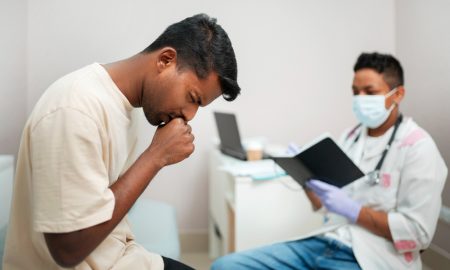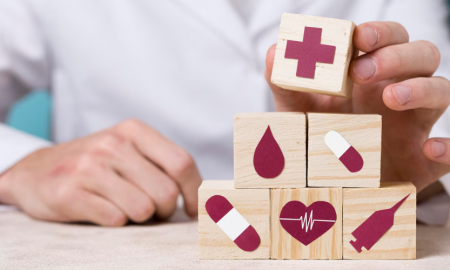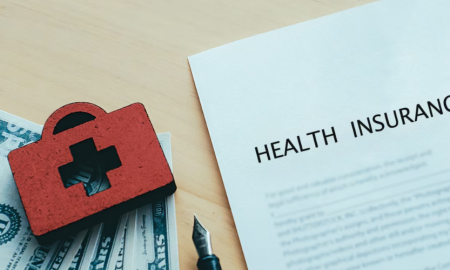
Here’s What You Can Do To Self-Examine For Potential Signs Of Skin Cancer!

Skin cancer is the most common form of cancer in the United States and affects millions of people each year. While it is highly treatable if caught early enough, the best approach to fighting skin cancer is prevention.
One way to do this is to regularly self-examine your body for changes that could indicate skin cancer. Knowing what to look for and how to do a proper self-examination can help you detect changes in your skin early on and take action before it becomes more serious.

Ylanite Koppens/Pexels | blueberries are high in antioxidants which is why you should regularly eat them
Take Close Notice of Your Body
When doing a self-examination, use a full-length mirror or have someone help you check areas that are difficult to see. Take notice of any new moles, sores, or scars that appear in different shades of color or shape from your existing ones.
Pay close attention to any moles that have an irregular border, inconsistent coloration, are growing in size, bleed/ooze/crust over, become painful/itchy/tender, or have changed in any other way from their original appearance. All these signs may be indicative of melanoma or other forms of skin cancer and should be evaluated by a dermatologist as soon as possible.
Look out for suspicious spots on all parts of your body — not just the areas typically exposed to the sun, such as face and arms — including hard-to-see places like buttocks, scalp (or surrounding hairline), between fingers & toes, back & chest, etc. If you notice any changes while self-examining your skin — even those that seem minor — contact a doctor immediately for further evaluation and testing.

Andrea Piacquadio/Pexels | examine your entire body closely in front of a full-sized mirror to check for any skin changes
Take Notice of Your Lifestyle Choices
In addition to physical examination, certain lifestyle choices can also reduce one’s risk of developing skin cancer. These include using sunscreen when spending time outdoors, avoiding tanning beds, and wearing protective clothing such as long sleeves and broad hats.
Additionally, you can also limit direct exposure to sunlight during peak hours between 10 a.m. – 4 p.m, minimize contact with products containing chemicals like benzene, and eat foods high in antioxidants (such as blueberries) which help protect cells against DNA damage caused by UV radiation.
Beware of the Risk Factors
The most important thing when it comes to preventing skin cancer is being aware of the risk factors associated with it and taking proactive steps toward protecting yourself against them. By routinely examining your body for irregularities while also making healthy lifestyle choices such as reducing sun exposure & wearing sunscreen, you can significantly minimize your chances of developing dangerous forms of skin cancer like malignant melanoma or squamous cell carcinoma.

shu lei/Pexels | a crucial part of preventing skin cancer is being cautious of the risks
Conclusion
Self-examination of skin cancer is an important part of early detection and prevention. By performing regular self-exams, you can be aware of any changes in your skin that may indicate the presence of a possible malignancy. It’s also highly recommended that you visit your dermatologist yearly for a professional screening to ensure nothing has been missed during self-examination.
While it may not always be easy to spot signs of skin cancer on yourself, taking proactive steps such as these could save your life or someone else’s one day. So don’t wait – start examining today!
More in Motivation
-
`
Why We Feel the Loss of Celebrities So Deeply?
Celebrity grief might sound strange at first. After all, most of us have never met these famous figures in person, yet...
November 5, 2024 -
`
Are High Deductible Insurance Plans as Ideal as They Appear to Be?
High deductible insurance plans have been a hot topic for years, especially as healthcare costs continue to rise. For many Americans,...
October 31, 2024 -
`
How Training Load Data Can Transform Your Exercise Routine
Tracking progress during workouts is challenging. Simple metrics like mileage or time don’t show the whole picture. Understanding the overall effort...
October 26, 2024 -
`
Katy Perry’s Weight Loss Journey: Secret Diet Tips Revealed
Katy Perry’s weight loss journey has been making headlines, with the pop star shedding 20 pounds over the past few months....
October 16, 2024 -
`
Celebrity Trainer Jeanette Jenkins Shares 5 Key Workout Motivations
Jeanette Jenkins is one of the most sought-after celebrity trainers, known for her ability to motivate and inspire people to achieve...
October 8, 2024 -
`
How to Spot Lung Problems Early and Protect Your Health
Lung problems can sneak up on anyone, affecting breathing and overall well-being. Recognizing early symptoms can be crucial in preventing severe...
October 2, 2024 -
`
How to Get Into ‘Breaking Shape’ | A Guide for First-Timers
Breaking is not just a dance style. It is a full-body workout. To get into breaking shape, you will need more...
September 27, 2024 -
`
What to Do If You Mess Up Your Diet: A Recovery Guide
Everyone makes mistakes when it comes to diet. It’s natural to wonder what to do if you mess up your diet,...
September 19, 2024 -
`
Did Charles and Alyssa Break Up? The Signs That Have Fans Concerned
Did Charles and Alyssa break up? This question has taken over social media, sparking a wave of concern among the couple’s...
September 11, 2024















You must be logged in to post a comment Login